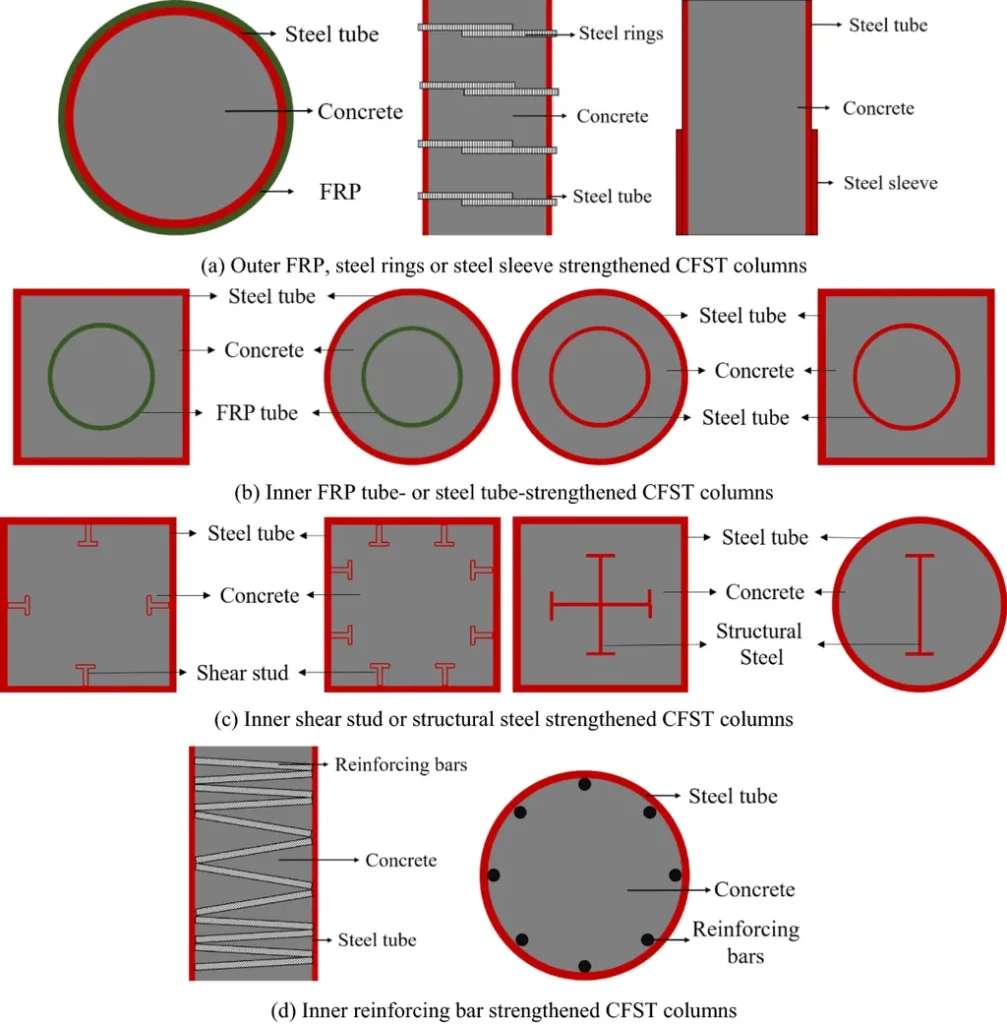In the ever-evolving world of construction and engineering, a groundbreaking study led by Kaichen Zheng from the Bartlett School of Sustainable Construction is set to revolutionize the way we understand and utilize hollow concrete-filled steel tube (H-CFST) structures. Published in the esteemed journal *Advances in Civil Engineering* (or *建筑工程进展* in Chinese), this research promises to enhance the accuracy and efficiency of designing and simulating these complex structures, with significant implications for the energy sector.
H-CFST columns, known for their high strength and ductility, have been widely adopted in modern engineering. However, their unique mechanical behavior, stemming from incomplete concrete filling and varying radial confinement, has posed challenges in applying existing constitutive models. Zheng’s study introduces a novel layered confined concrete constitutive model, modifying Mander’s model to better account for the radial distribution of lateral steel restraint.
The research employs an iterative finite element method in ABAQUS, a widely-used simulation software, to accurately predict the axial and flexural responses of H-CFST columns. The model’s validity was confirmed through comparisons with both scaled axial compression tests and full-scale bending tests of thin-walled high-strength CFST (TSC) piles. The results were impressive, with mean errors of just 5.68% for axial compression tests and 9.72% for bending tests, demonstrating the model’s high accuracy.
Zheng’s model outperformed traditional Mander and ordinary concrete models, particularly in capturing peak load and post-peak softening behavior. This advancement is crucial for the energy sector, where the design and construction of robust, efficient structures are paramount. “Our model provides a more precise and practical approach to simulating and designing H-CFST structures,” Zheng explained. “This can lead to more efficient use of materials, reduced construction costs, and enhanced structural performance.”
The implications of this research are vast. As the energy sector continues to grow and demand more sophisticated structures, the ability to accurately model and predict the behavior of H-CFST columns becomes increasingly important. Zheng’s work not only advances our understanding of these structures but also paves the way for future developments in the field.
By providing a more accurate and efficient method for analyzing H-CFST structures, this research could significantly impact the energy sector. It enables engineers to design structures that are not only stronger and more durable but also more cost-effective. As the world continues to push the boundaries of engineering and construction, Zheng’s innovative approach offers a promising solution to some of the industry’s most pressing challenges.
In the words of Zheng, “This work is a step forward in our quest to create safer, more efficient, and more sustainable structures. It’s an exciting time for the field, and I’m thrilled to be a part of it.” With such promising research on the horizon, the future of construction and engineering looks brighter than ever.

